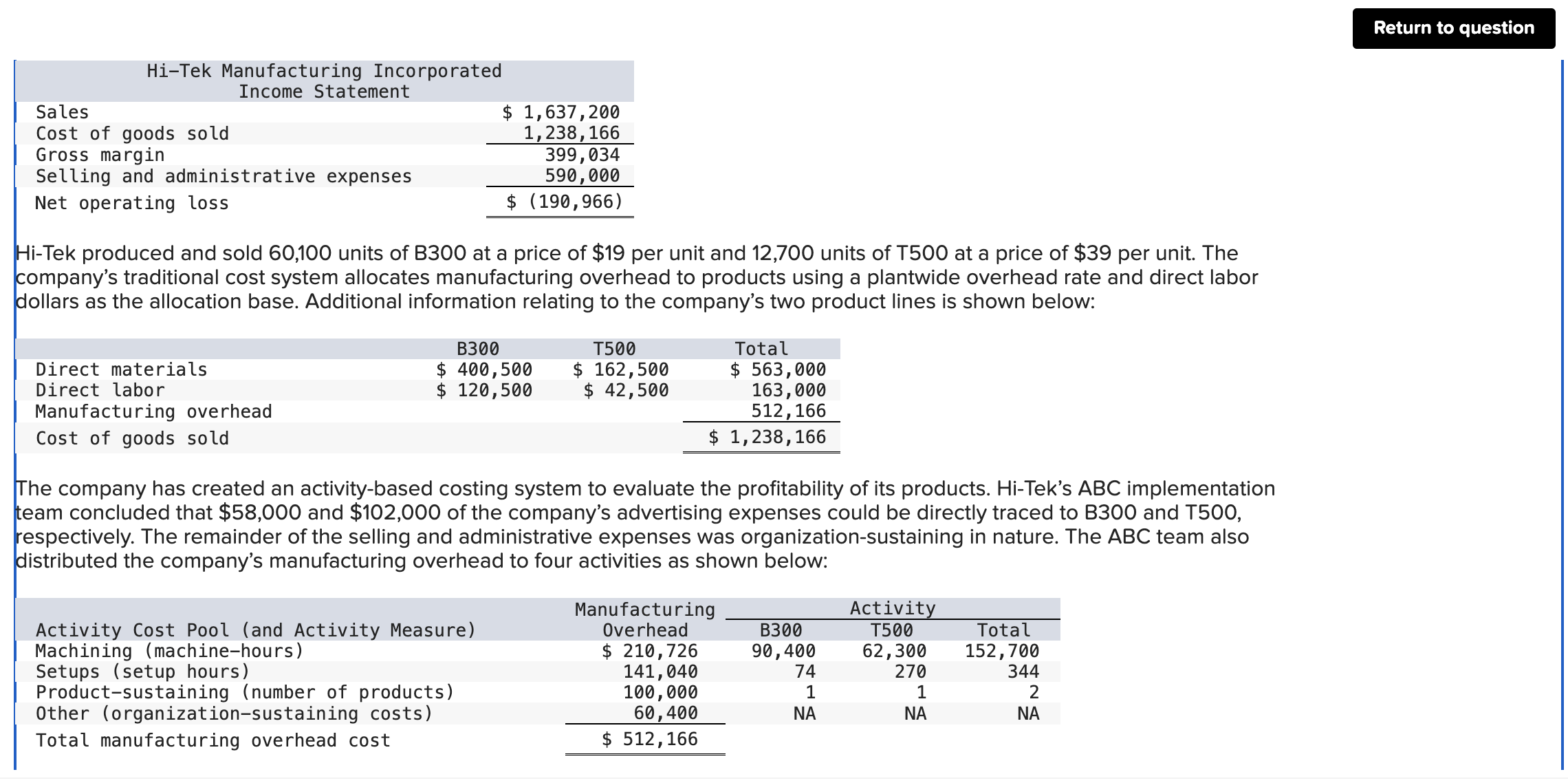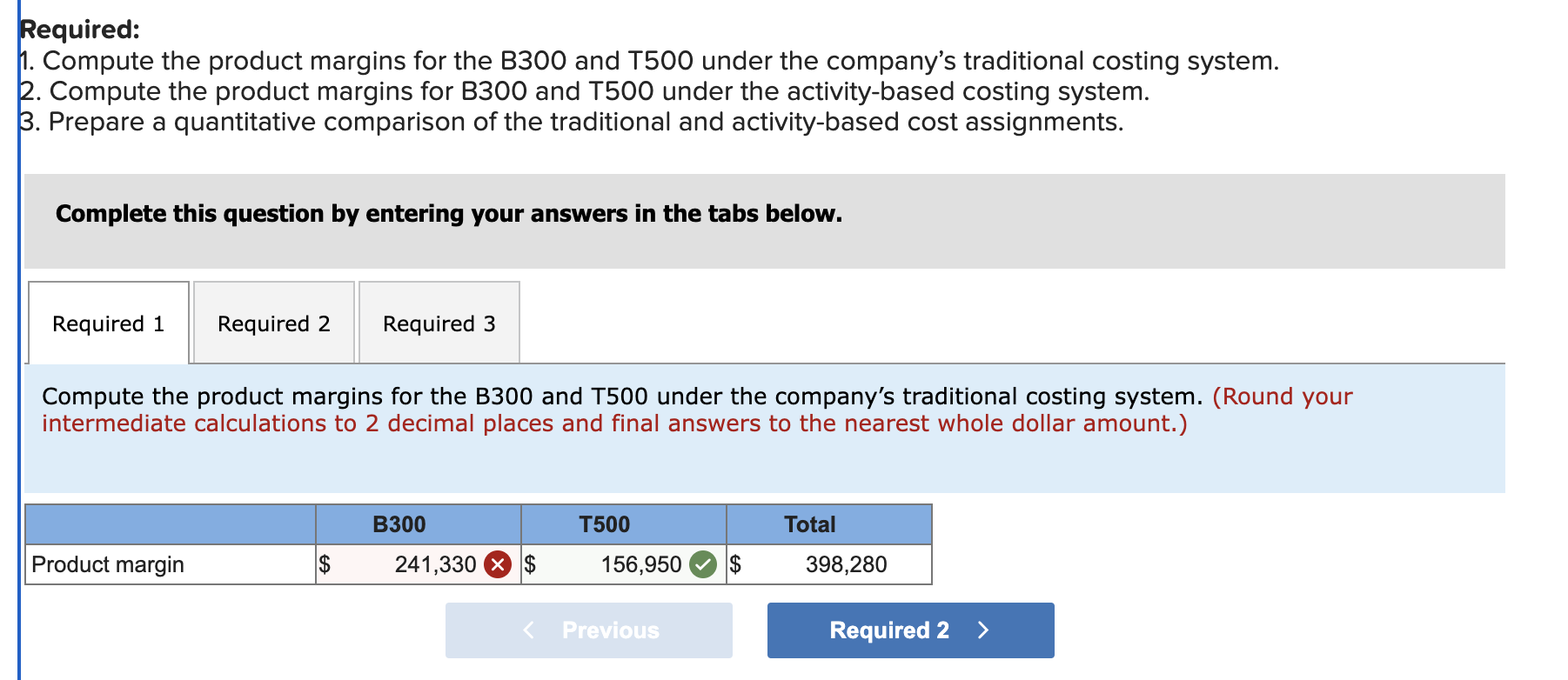(Solved): Hi-Tek produced and sold 60,100 units of B 300 at a price of \( \$ 19 \) per unit and 12,700 unit ...
Hi-Tek produced and sold 60,100 units of B 300 at a price of \( \$ 19 \) per unit and 12,700 units of T 500 at a price of \( \$ 39 \) per unit. The company's traditional cost system allocates manufacturing overhead to products using a plantwide overhead rate and direct labor dollars as the allocation base. Additional information relating to the company's two product lines is shown below: The company has created an activity-based costing system to evaluate the profitability of its products. Hi-Tek's ABC implementation team concluded that \( \$ 58,000 \) and \( \$ 102,000 \) of the company's advertising expenses could be directly traced to B300 and T500, respectively. The remainder of the selling and administrative expenses was organization-sustaining in nature. The ABC team also distributed the company's manufacturing overhead to four activities as shown below: Required: 1. Compute the product margins for the B300 and T500 under the company's traditional costing system. 2. Compute the product margins for B300 and T500 under the activity-based costing system. 3. Prepare a quantitative comparison of the traditional and activity-based cost assignments. Complete this question by entering your answers in the tabs below. Required 2 Compute the product margins for the B300 and T500 under the company's traditional costing system. (Round your intermediate calculations to 2 decimal places and final answers to the nearest whole dollar amount.)

